A Guide To Commercial Kitchen Food Hygiene
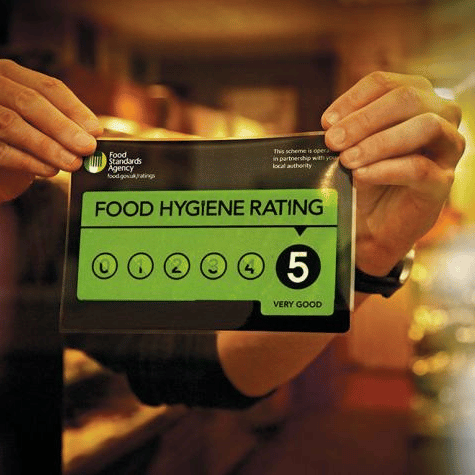
In the food industry, a restaurant’s reputation is built from a delicious menu, flawless customer service and raving reviews from your colleagues and customers.
But with social media being accessible to millions at a click of a button, a bad review due to poor food hygiene can have a catastrophic impact. Although ‘food hygiene’ and ‘food safety officers’ may sound a little scary, you can easily ensure your kitchen is following all the correct rules and regulations to meet set standards. To get you started, we’ve broken down the areas you need to consider from food storage to staff training.
What is a food hygiene rating?
A food hygiene rating is a score given to an institution based on the cleanliness and hygiene on the day of the review from the Food Standards Agency (FSA). The local authority will provide the institution with a score based on the commercial kitchen food hygiene and not on the quality of the food. Whilst businesses are encouraged to display their food hygiene rating, it isn’t a legal requirement. Hiding a poor score by not displaying your rating is futile because your score can be easily accessed online. If an institution is given a score of 5, they are considered to have “very good” food hygiene. Below are the descriptions of what each number indicates;






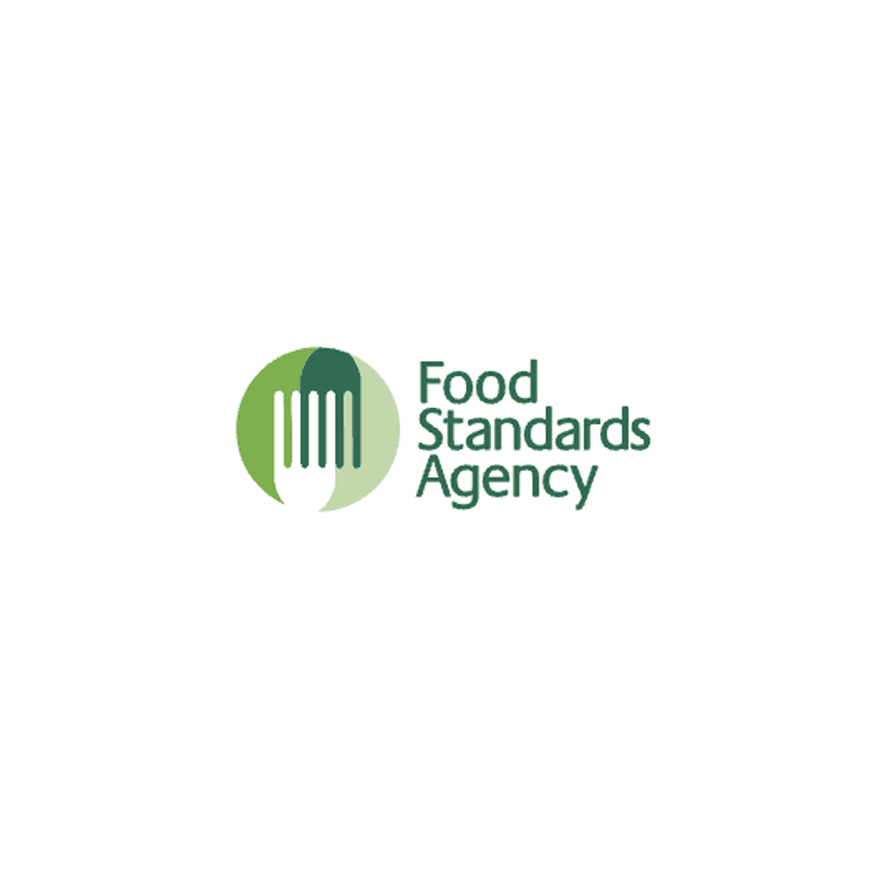
Businesses are encouraged to display their food hygiene rating on their premises. Although it is not compulsory, all scores can still be found on the Food Standards Agency website.
Personal Hygiene in Commercial Kitchens
Your kitchen can’t run without your staff and as they’ll be handling food and liaising with customers, their personal hygiene is extremely important. This includes:
Correct Hand Washing
Even before COVID-19, correct hand washing within the food industry is an essential part of food hygiene. All staff should wash their hands for 20 seconds with soap and warm water, when arriving and leaving, as well as before and after handling food. They also need to be thoroughly dried to reduce the spread of harmful germs.
Projecting Cuts and Injuries
This can’t always be avoided in a commercial kitchen, but cuts and injuries need to be cleaned up and monitored safely. If a staff member receives a cut, clean it under running water and ensure it has stopped bleeding before applying a waterproof plaster. Whilst the cut is healing, a clean, brightly coloured plaster should be applied daily. It’s recommended that the staff member should also wear gloves.
Taking care of Illnesses
If your staff are unwell, they shouldn’t be allowed in the kitchen and potentially shouldn’t be on the premises at all. Germs and contagious illnesses can easily be transferred to other staff members, customers or contaminate food, resulting in potential food poisoning, kitchen downtime and negative reviews.
Due to different smells and fumes within a kitchen, staff will naturally cough or sneeze. Ensure they turn away from any food they’re handling to cough or sneeze into their elbows. They’ll then need to wash their hands and face, with soap and warm water, before returning to work.
Suitable Clothing or Uniform
Staff should be advised to arrive to work in their own clothes and change into their uniforms before entering the food preparation area. Whether you are providing your staff uniforms or not, it should be clearly advised that:
- All clothing should be clean
- Disposable gloves, aprons, hair nets and protective footwear should be worn
- Clothing should be white or light-coloured to spot any spillages
- Jewellery should be removed; not only can it carry germs, but it could also cause harm to the staff member if it gets caught, or a customer if it falls into any food.
Personal Hygiene in Commercial Kitchens
Your kitchen can’t run without your staff and as they’ll be handling food and liaising with customers, their personal hygiene is extremely important. This includes:
Keep Stock Rotating
A good and common method of stock rotation is ‘first in, first out’. Move any new supplies to the back so existing supplies will sit at the front and be used up within their best-by date. Try to keep on top of your inventory as well, by knowing what food you have stored where; you can plan your menu effectively and avoid wasting any food.
Check Your Labels and Containers
All food must be stored in an airtight container; this will extend its shelf-life and ensure no bacteria can get in. If the seal of a container is broken, the food inside should be thrown away. Once a container has been opened, if you have anything left-over, reseal it securely with cling film, tin foil or an airtight container and ensure it’s labelled with the content and use-by date.
Storing Meat Safely
Whenever you are handling raw meat, ensure your hands are washed before and after. If you’re moving meat into a new container, wipe down the container once it is sealed and wash your hands again before storing it to avoid any cross-contamination. For any animal products stored in your refrigerator, place these at the bottom to also avoid cross-contamination.
Storing Food at the right Temperatures
Staff should be advised to arrive to work in their own clothes and change into their uniforms before entering the food preparation area. Whether you are providing your staff uniforms or not, it should be clearly advised that:
You should always follow the storage instructions for all your food supplies. Dry foods, or ambient foods, can be stored at room temperature in your cupboards or on shelves. For chilled food, such as fruit, veg, meat or ready-to-eat food, this must be stored in your refrigerator straight away at 8˚C or below. You can only remove these types of food from the refrigerator once for no more than 4 hours, any more and it’ll have to be thrown away. If you’re storing any leftover meals, make sure it has cooled down thoroughly before securely sealing and storing it in a fridge or freezer.
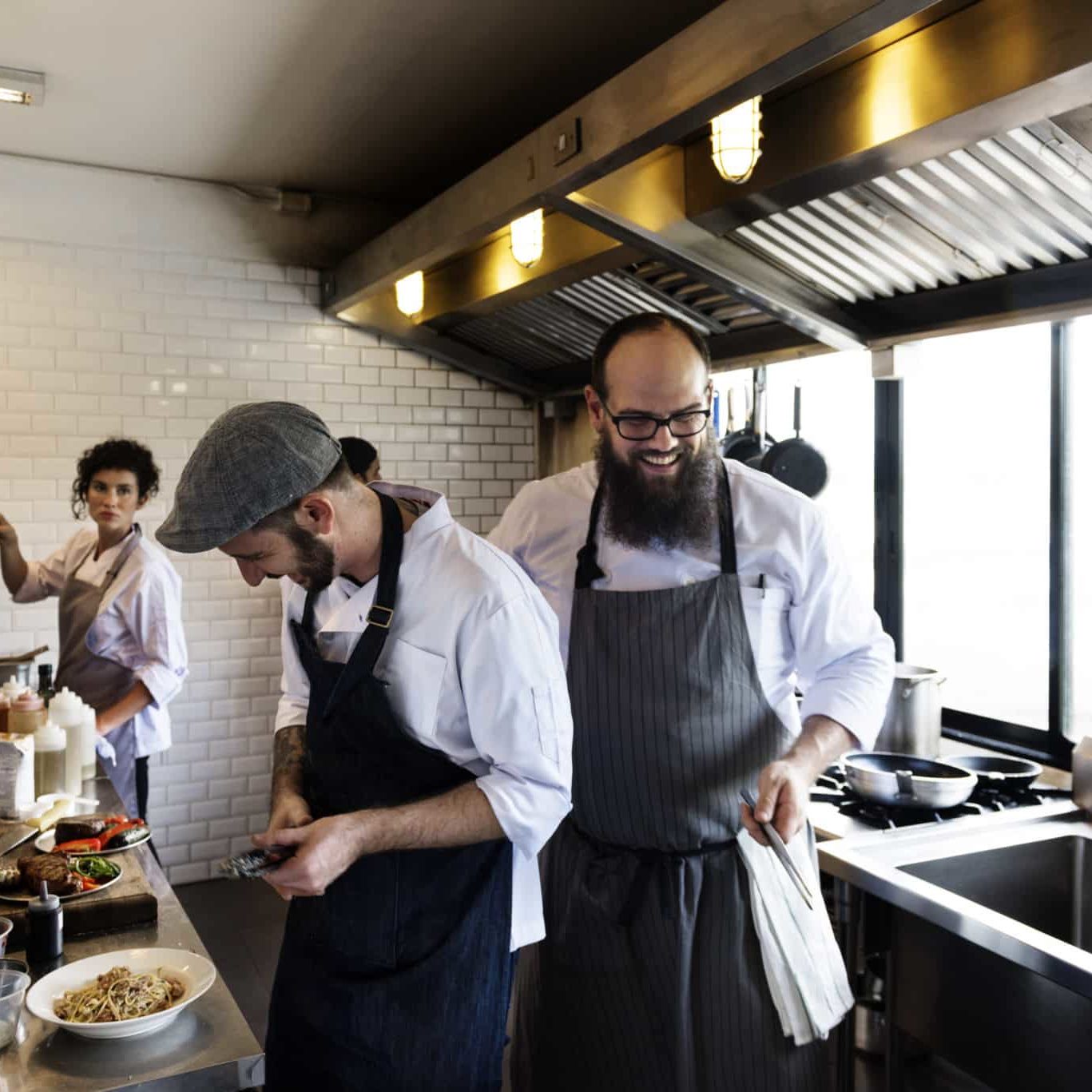
Staff training
In the UK, people who handle or serve food don’t have to have a hygiene certificate, but by law, they must have had the appropriate training in food hygiene. As an employer, this is your responsibility. Once your team is up to date on cleaning and food safety, they’ll feel more confident and aware of how to keep those food hygiene ratings up. You can also include handy hints, tips and reminders around the kitchen, to help keep your staff on top of things.
A staff training plan will allow you to keep track of who has had what training and to which level, as well as identifying any areas where additional training is needed. Two recommended training courses for your staff include: Hazard Analysis and Critical Control Points (HACCP), which provides key information on how to safely manage food, and Temperature Control Training.
Temperature Control Training
A common cause of foodborne illnesses is down to a lack of understanding of food temperature control. Different types of food need to be stored, served and reheated at certain temperatures to avoid the risk of contamination or bacteria growth. If your staff have a clear understanding of the food they’re handling, you reduce the risk of wastage and illnesses, creating a safer and more productive kitchen.
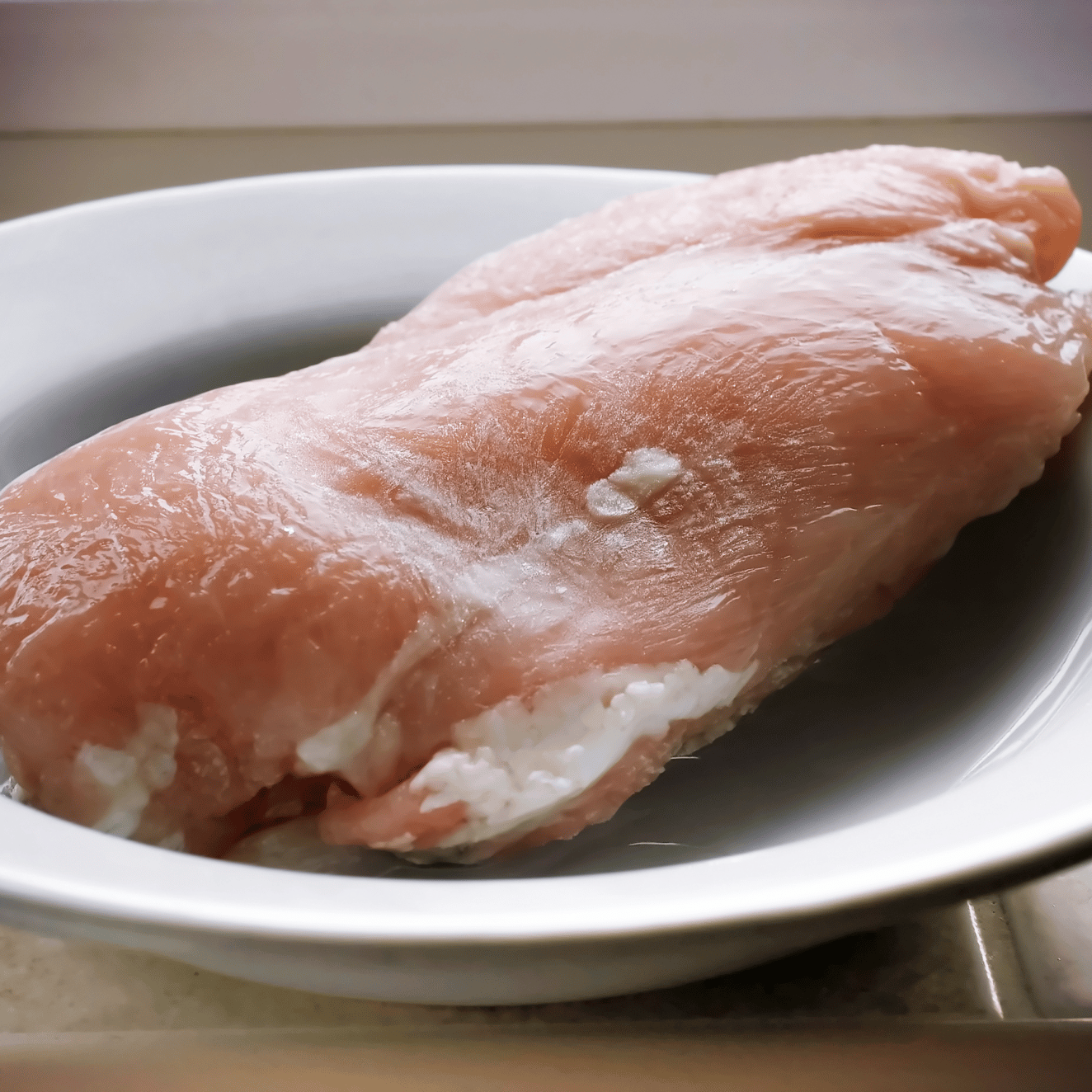
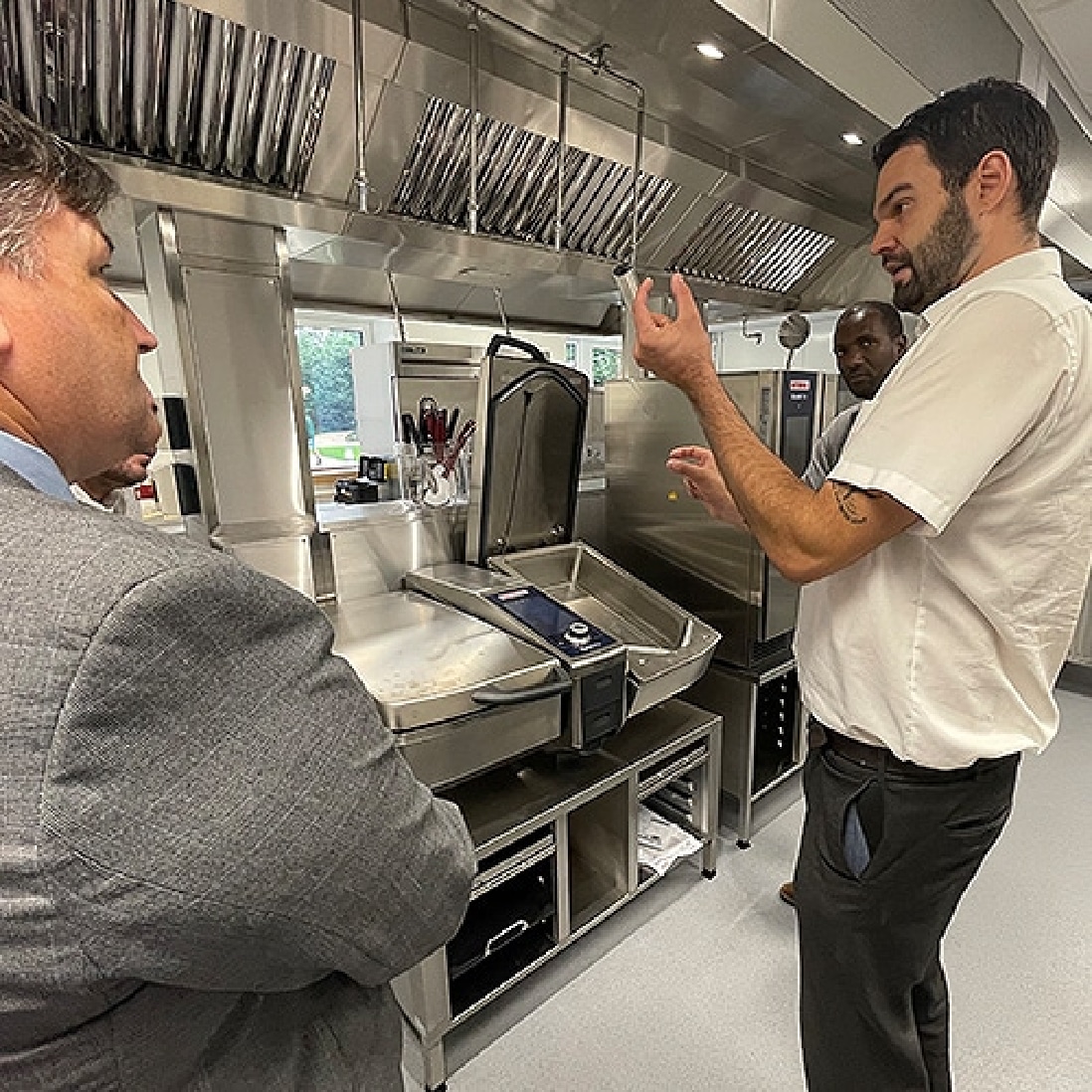
Keep your kitchen at a 5* Rating
Although this may seem a lot, these are small, everyday actions that you and your team can make to ensure your kitchen receives that ‘good’ food hygiene rating. For any expert advice on how to keep on top of your food hygiene, get in touch with one of our team.

Share This: